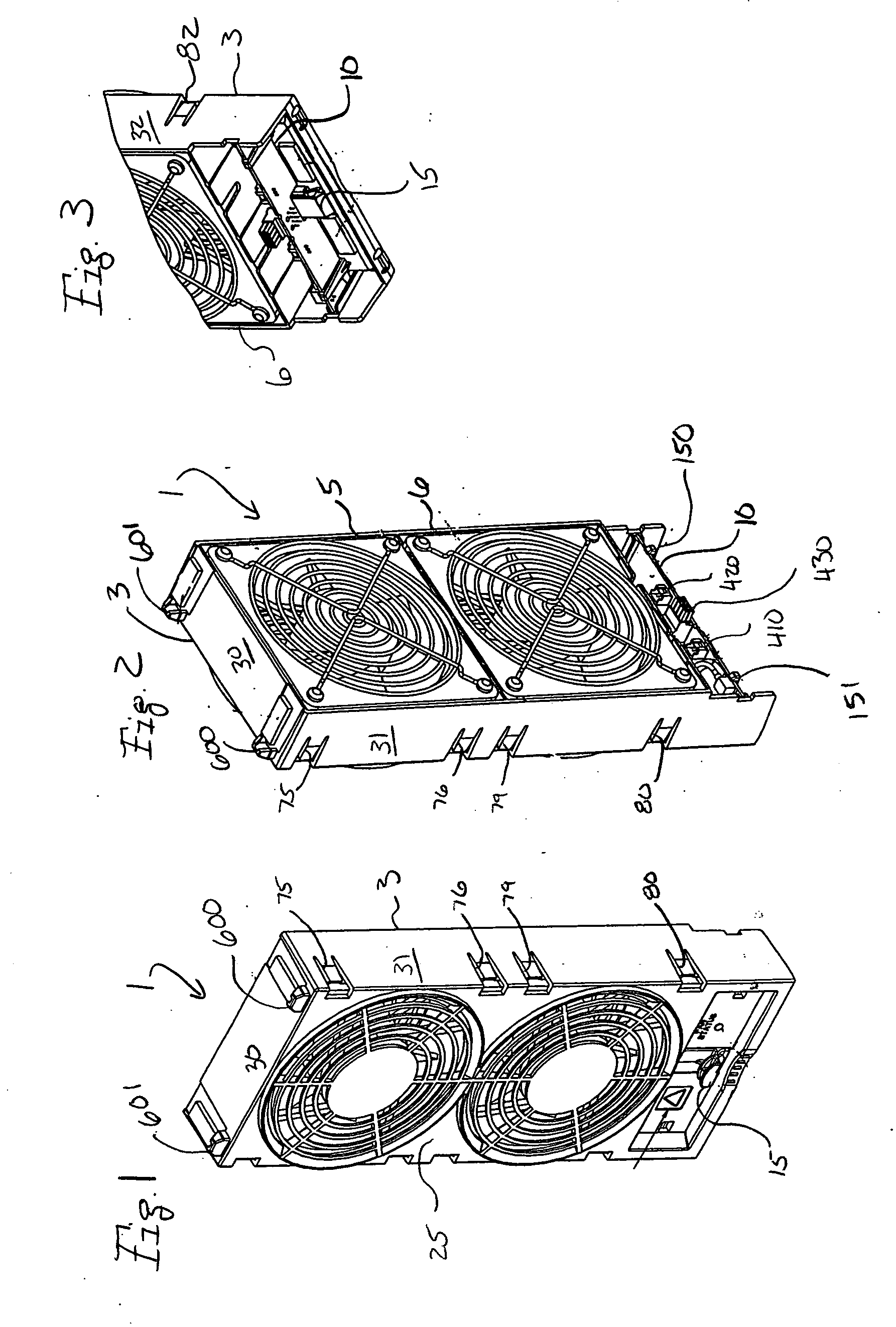Fan module
- Summary
- Abstract
- Description
- Claims
- Application Information
AI Technical Summary
Benefits of technology
Problems solved by technology
Method used
Image
Examples
Embodiment Construction
)
[0035]FIGS. 1 and 2 show a preferred embodiment of a fan module 1. The fan module 1 includes a shell 3 that is molded of plastic as a single unitary body. The shell 3 houses or supports operational components of the fan module 1. These components include individual conventional off-the-shelf fan(s) 5, 6 (more visible in FIG. 2), a printed circuit board assembly 10 (FIG. 2) and a latching member 15 (FIG. 1). As depicted in FIG. 4, the fan module 1 mounts on a chassis 20 that houses electrical circuitry and the fans 5, 6 of the fan module 1 cool the circuitry in the chassis 20. FIG. 4 shows an example of such a chassis 20 with three fan modules 1, 21, 22. The manner in which the fan modules 1, 21, 22 are mounted and secured to a chassis 20 will be discussed below.
[0036] Molded into the shell 3 are various features that allow the operational components of the fan module 1 to be mounted and secured in the shell 3 without any extraneous hardware, providing for relatively quick and chea...
PUM
 Login to View More
Login to View More Abstract
Description
Claims
Application Information
 Login to View More
Login to View More - R&D
- Intellectual Property
- Life Sciences
- Materials
- Tech Scout
- Unparalleled Data Quality
- Higher Quality Content
- 60% Fewer Hallucinations
Browse by: Latest US Patents, China's latest patents, Technical Efficacy Thesaurus, Application Domain, Technology Topic, Popular Technical Reports.
© 2025 PatSnap. All rights reserved.Legal|Privacy policy|Modern Slavery Act Transparency Statement|Sitemap|About US| Contact US: help@patsnap.com



